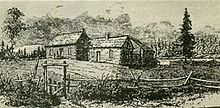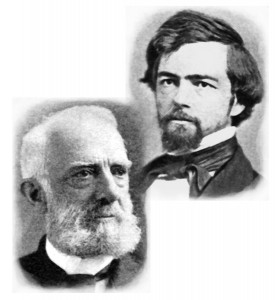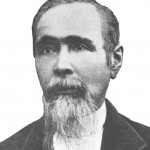In 1841, a stubborn 64 year old Methodist preacher named Joseph Williams left his home in Ripley County, Indiana to travel to the Oregon Territory. His family and neighbors all advised against it, pointing to dangers, hostile Indians and wild beasts. “But my mind leads me strongly to go: I want to preach to the people there, and also to the Indians, as well as to see the county.”
He travels to the Oregon and back in the next two years, sometimes alone, sometimes in company with French fur traders and their Indian wives, or other Americans making for California or the Willamette Valley. He is a tough old bird, surviving swollen rivers, fevers, a mishap with an ax that opens his shin, and the more than occasional snubs to his preaching from fellow travelers and some of the established missionaries.
To modern eyes he is an odd mixture of prejudice and openness. He notes many unbelievers who treat him kindly as well as those who make his life a misery with swearing and brutality. He shows no special connection to the Indians he meets but deplores the fact that many of the established Oregon missions are doing so little to care for the Indians in their areas. He criticizes other missionaries for the coldness of their services and their emphasis on farming and caring for their own comfort and safety above that of the natives they went there to serve. (This may account for some of the snubs to his preaching mentioned above.)
Meet Joseph Williams and read his story in Narrative of a tour to Oregon, 1841-2 in Classics in Washington History.















 The son of a Hudson’s Bay factor and Raven, the daughter of Chief Comcomly of the Chinooks, Ranald MacDonald grew up on trading posts in the Northwest. Fascinated by the idea of visiting Japan since his youth, he conceived the plan of shipping out on a whaling vessel and marooning himself on the Japanese shore. Despite the fact that the government of Japan threatened death or imprisonment to foreigners trying to enter the kingdom, he did just that in 1848.
The son of a Hudson’s Bay factor and Raven, the daughter of Chief Comcomly of the Chinooks, Ranald MacDonald grew up on trading posts in the Northwest. Fascinated by the idea of visiting Japan since his youth, he conceived the plan of shipping out on a whaling vessel and marooning himself on the Japanese shore. Despite the fact that the government of Japan threatened death or imprisonment to foreigners trying to enter the kingdom, he did just that in 1848. “One day it was more than I could enjoy. The wind roared so loud, and the sound of the waves was so heavy, that I retreated to my berth and lay down; but I could not keep my mind off the thought of how deep the water was under us. After awhile I went on deck and sat there again, and the vessel began to plunge so that it seemed as if it were trying to stand upon one end. I felt so frightened that I thought I would try to speak with the captain, and ask him if he ever knew a lumber vessel to tip over; and if I dared I would suggest that he should carry a little less sail…
“One day it was more than I could enjoy. The wind roared so loud, and the sound of the waves was so heavy, that I retreated to my berth and lay down; but I could not keep my mind off the thought of how deep the water was under us. After awhile I went on deck and sat there again, and the vessel began to plunge so that it seemed as if it were trying to stand upon one end. I felt so frightened that I thought I would try to speak with the captain, and ask him if he ever knew a lumber vessel to tip over; and if I dared I would suggest that he should carry a little less sail…